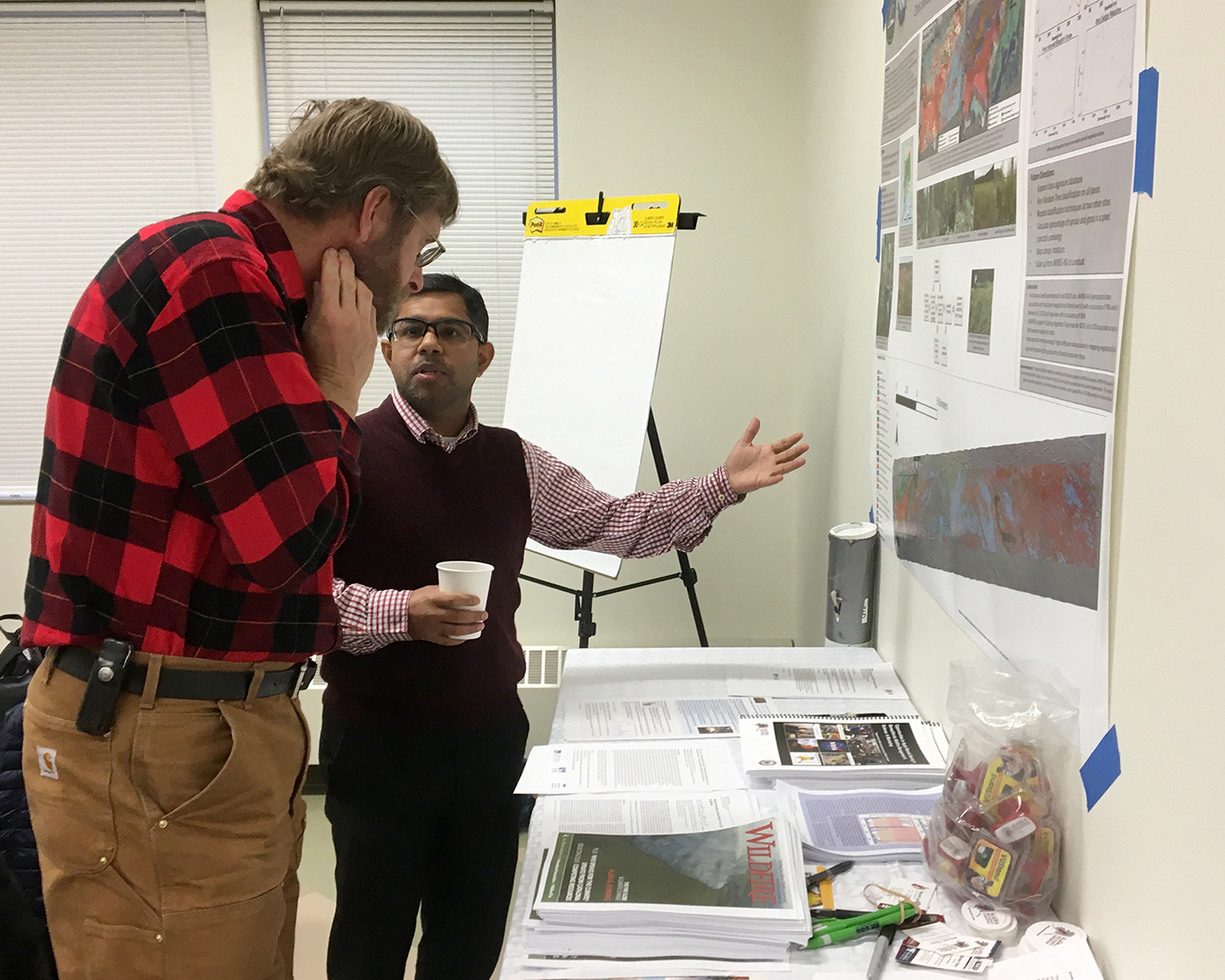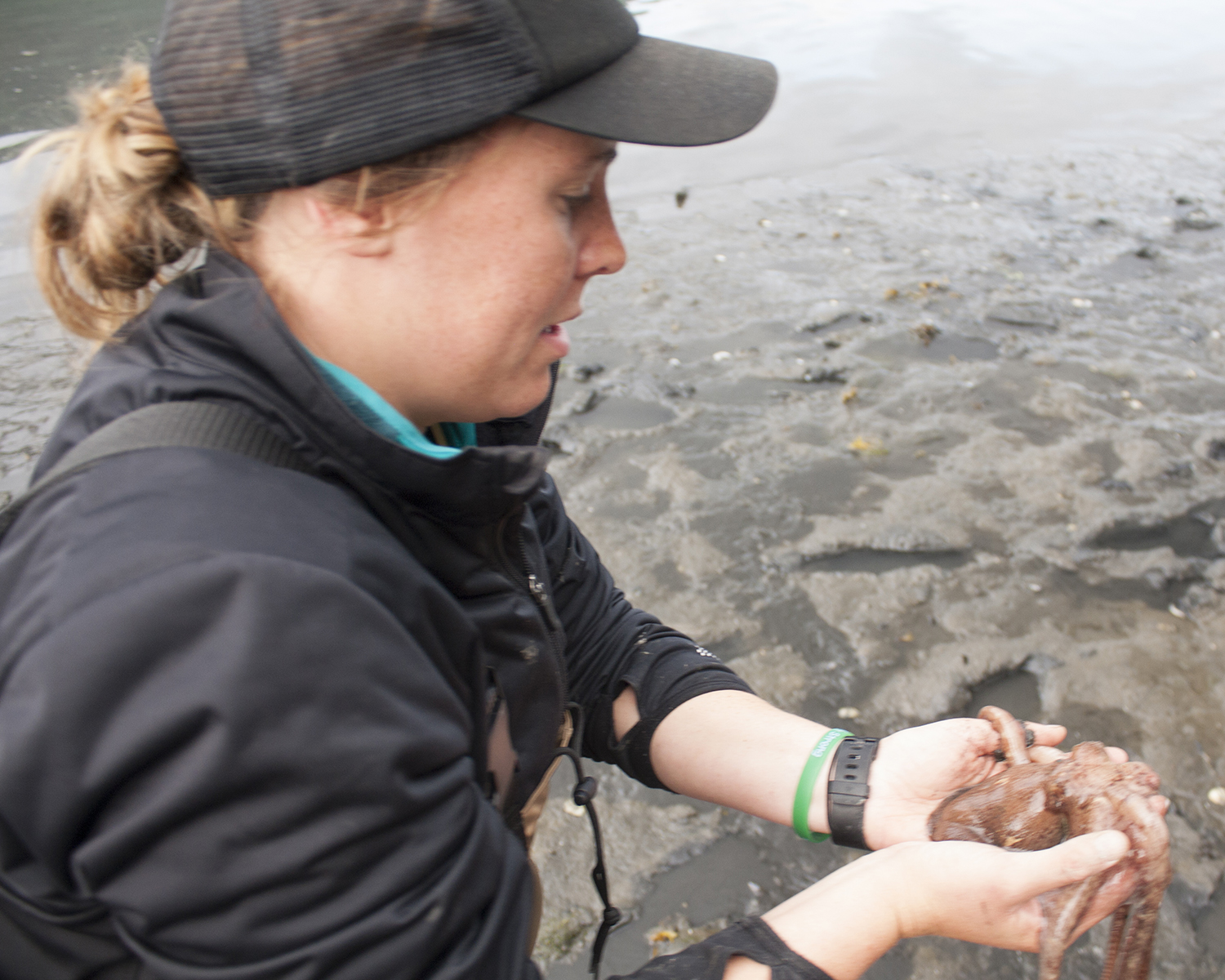Collaborations
Collaborations with organizations both inside and outside of academia have been key to shaping Fire & Ice research and in sharing project results with a wide audience. Major collaborators across the project include the Arctic Research Consortium of the United States; Alaska INBRE, BLaST, and Alaska NASA EPSCoR; and the UAF CFOS Tamamta program.
Below find descriptions of key collaborations by each of the project components.
Boreal Fires Collaborations

The most significant Boreal Fires partner is the Alaska Fire Science Consortium, a multiagency entity that helps to shape research direction, provide agency contacts, and apply findings. Three members of the consortium are members of the Boreal Fires leadership team, and help facilitate communications with relevant fire and resource managers to assist in integrating Boreal Fires products and outcomes into wildland fire management. Also, biennial consortium workshops have been an invaluable venue for researchers to exchange findings with the fire management community.
The Tanana Chiefs Conference is co-producing research with researcher Todd Brinkman. In particular, TCC personnel have conducted UAV surveys of firebreaks in rural villages, and have also used UAV's to assist in studies of fire impacts on the Upper Chena River. Learn more in this research highlight.
Bonanza Creek Long-Term Ecological Research (LTER) incudes two research sites, Bonanza Creek Experimental Forest and Caribou-Poker Creeks Research Watershed, that are being used to ground-truth hyperspectral remote sensing.
Other major collaborations include:
- The Alaska Department of Fish and Game collaborated on research into wildfire impacts on moose harvest
- The NASA Arctic Boreal Vulnerability Experiment (ABoVE)collaborates on multiple levels
- The National Weather Service shares weather and lightning data
- The National Park Service provides data on snow cover, fire ratings and fire danger forecasts
- The U.S. Fish and Wildlife Service collaborates on hyperspectral imaging in the Kenai National Wildlife Refuge
Coastal Margins Collaborations

The Kachemak Bay National Estuarine Research Reserve (KBNERR) shares data from their ongoing effort to characterize the oceanography of Cook Inlet. KBNERR also assists with fieldwork, loans gear, and serves as a valuable partner for public dissemination of Coastal Margins work in collaboration with the DEW component.
Other major collaborations include:
- The Northern Gulf of Alaska LTER contributes offshore ocean data to complement nearshore F&I data
- The National Oceanographic and Atmospheric Administration (NOAA) helps with hindcasting, provides student scholars, and assists with fieldwork, sensor placements, and gear loans
- The Gulf Watch Alaska monitoring program shares environmental and biological data and samples and assists with fieldwork in Kachemak Bay
- The U.S. Forest Serviceassists with stream and intertidal fieldwork and shares laboratory facilities and supplies
- The Center for Alaskan Coastal Studies provides project volunteers
DEW Collaborations
The Fairbanks North Star Borough School District has been a major partner, including providing initial online and in-person instruction of the DEW curriculum through the district's 21st Century Learning afterschool program.
Other major collaborations include:
- The aforementioned Kachemak Bay National Estuarine Research Reserve (KBNERR) is also helpng to shape and disseminate the curriculum
- The Sitka Sound Science Centerprovides research and education fellowships
- The BLM Campbell Creek Science Center in Anchorage assisted in the creation of out-of-school curricula and serves as a potential venue for their piloting and implementation
- The statewide Alaska Afterschool Network has distributed course materials and assisted with events
Other Collaborations

The Alaska Technology Research and Development (TREND) Center is an important partner in Fire & Ice economic development efforts. TREND awards “Phase 0” grants to Alaskan entrepreneurs to help them get new projects off the ground and apply for larger amounts of federal Small Business Innovation Research (SBIR) and Small Business Technology Transfer (STTR) funding. TREND has awarded 13 grants to date and also offers online presentations on the topic of applying for SBIR funding.
Other Economic Development collaborations include:
- UAF Center ICE (Innovation, Commercialization and Entrepreneurship) partners with F&I on the annual Students2Startups internship program
- F&I collaborates with the UAF Office of Intellectual Property and Commercialization (OIPC) and Alaska Startup Week on a variety of economic development initiatives
- Fire & Ice partnered with the University of Alaska Foundation to provide a series of workshops aimed at helping UA researchers make connections with private funders
Communications collaborations include:
- The Alaska Center for Energy and Power partnered on the creation of the McKinley Fire video
- The UA Geophysical Institute partners on the Science for Alaska lecture series
- Explore Fairbanks collaborated on the 2020 EPSCoR tour guide science workshop and the Alaska Travel Industry Association on the 2021 edition
- Telesomm partnered on the Wildfire & Wine Science Pub

